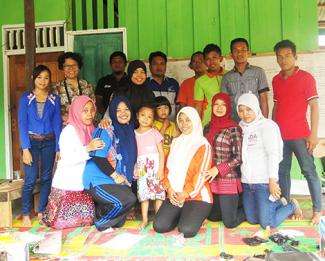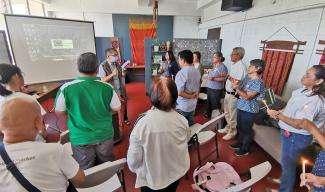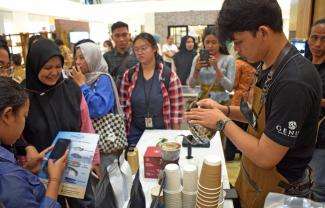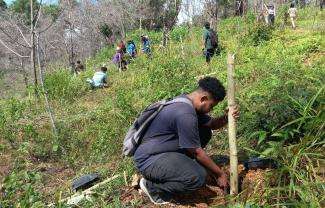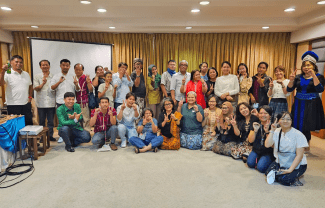It's not easy to convince people to write about their hometown pride. At least that is what I encountered in 2 days (4-5 November 2014) of encouraging 10 people from the village Sungai Jambat, Sungai Sayang, Remau Bako Tuo, Sungai Cemara and Sungai Itik. It requires a tremendous effort, because I was not part of their daily lives. It takes 7 hours from the city of Jambi to get to the coastal village of Sadu, sub-district in Tanjung Jabung, Jambi.
Writing village stories becomes a new thing in their routines as farmers of rice and copra, splint fishermen, fishing nets and traders. I had to start with success stories of villages changing because the story of his village was uploaded to popular media such as the Internet. Debunking and proving that writing is not difficult, convinces the people that writing actually aligns them with the intellectual culture.
The process was successful; in two days that there were 17 written posts of the village. Having their stories heard by others increases confidence that changes can happen in the village. Just like one of the 10 participants in the Writing Stories Society facilitated Kampung Gita Buana Jambi together Samdhana Institute Bogor.
Residents of Jambat River and surrounding areas have never participated in any writing activity and practice. Mrs. Erlina (37), of Jambat River had taken part a similar activity but rarely practice writing.
"I think it's great keep going and not stop. We need to be motivated in order to produce writing for reading on the Internet, especially our village has a lot of potential and activities that can be shared," explained this mother of one who works as an early childhood teacher.
Activities centered at Camp Gita Buana-Jambat River are part of capacity building program from Ecosystem Alliance partners in Indonesia. Erlina, Rosnaini, Henri, Marlina, Wati, Gusti, Erlina Ahmad, Agustian, Uus, Maspen and Nani are all participants.
Nani of Jambat River agrees with her colleague, Erlina. In her opinion, these activities can help promote a variety of Jambat River production, because there are more than just coconuts and betel nuts at the River Jambat.
"We also produce rosella syrup which is rich in benefits, which unfortunately is not widely known if not for the province exhibition," said Nani, whose husband is the secretary of the village.
Located on the seashore and sharing a border Strait of Malacca, is the reason why elders in the 5 villages mostly migrated from Sulawesi (Bugis). Most villagers in the Sadu district live as farmers of rice and copra, fishermen, and traders.
Another alternative job of the women in Sadu is 'mendolar', i.e., processing other people's areca trees on a compensation basis. According Wati (39), of Jambat River, her village has a lot of potential for areca, coconut, palm and banana. But the most profitable is areca palm.
"The work is not too hard, because men, women and children can do this. The pay is Rp50,000 per kilo", he said.
Wati also added a writing exercise activity she had the courage to share her opinion.
Interesting and important to note is that Erlina and Wati are 2 of the 10 participants who successfully wrote their honest experiences living in Jambat River. Both worked hard to write and read in front of the other participants. They shared their sad stories with streams of tears. They cannot believe it themselves; that simple writing creates a sense of melancholy.
